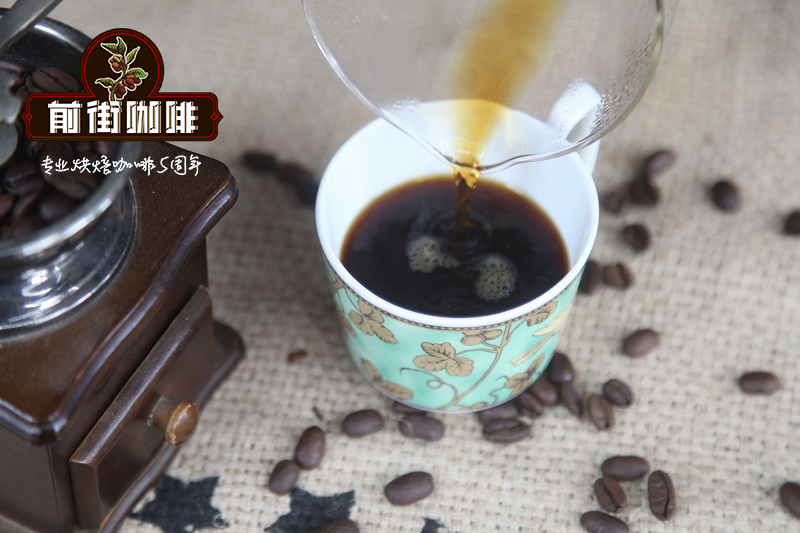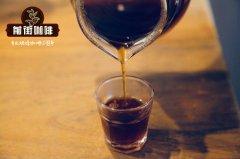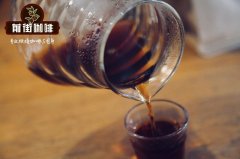Arabica Variety Classification Guide Arabica Low Caffeine Arabica Growing Conditions

Professional coffee knowledge exchange more coffee bean information please follow the coffee workshop (Wechat official account cafe_style)
Arabica is mainly used in single or boutique coffee, while Robusta is used to make instant coffee. Although Arabica can be defined as premium coffee and Robusta as secondary, it does not have to be classified in this way, and it is more appropriate to distinguish it according to its own favorite taste. In terms of taste, the United States and Japan drink light coffee made from Arabica more often, while Europe prefers Italian concentrate made from a mixture of Arabica and Robusta.
Arabica coffee accounts for 75% of the world, and because it needs to be planted on sloping slopes at high altitude, harvesting must be done manually, which is difficult to grow, but because Arabica coffee beans are rich in aroma, mild in taste and evenly distributed in oil, and contain less caffeine, even if it is not easy to grow and obtain, it does not affect the love of the world.
Robbins special coffee tree is resistant to high temperature and cold, it has strong adaptability, it can grow well on flat ground, and the harvest does not have to be manual, it can be carried out by machine. Robbins' special coffee is less fragrant and bitter, and its caffeine content is more than double that of Arabica, so most instant coffee or breakfast coffee sold in general belongs to Robster.
The truth.
In addition to the producing conditions of good Arabica coffee raw beans (volcanic soil, high altitude, temperature difference between day and night, rainfall, etc.), we should pay more attention to the fineness of the process of harvesting (manual picking, picking only ripe fruit), treatment (peeling, fermenting and removing pulp).
The cultivated land of a large manor is often thousands of mu. Therefore, it is also necessary to test and evaluate the quality of coffee in different blocks (hills) every year. Finally, the assembly line must be arranged to pick out the defective beans manually in order to really ensure the quality of raw beans in the consuming country.
The shelf life of coffee is very short. For more information, please see the overview of boutique (top) coffee. In general, what can be seen in the store is to pour the deep-baked beans directly into an open plastic container on a bean grinder or coffee maker. So, in fact, there is no way to tell which cup of coffee delivered to the hand is how long the coffee beans have been brewed?
The annual demand of chain cafes is huge, and it is an impossible task to spend a lot of money on high-grade Arabica raw beans under the premise of business (we must ensure shareholders' profits).
Independent cafes or self-baked cafes have sprung up in recent years, so be careful to choose those who really know and care about the quality of coffee to enjoy high-quality Arabica coffee.
In short, you have to be careful when drinking coffee out. So as not to spend money, but drink shoddy coffee. In addition to being a fat and unscrupulous businessman, he has to lose the health of himself and his family.
Subclassification of Arabica varieties
Coffee variety
In the world of "boutique coffee", Arabica varieties are only classified and discussed. The more representative varieties are:
Ancient native species: Typica (Tibica), Bourbon (bourbon)
Well-known Typica variants: Maragogype (Giant Elephant Bean), Geisha (nicknamed geisha bean … Because of the homonym with [geisha], etc.
Well-known Bourbon variants: Caturra (Kaddura), Pacas (Pacas), etc.
Well-known mixed race: Pacamara (Pacas + Giant Elephant Bean = Pacamara)
Arabica's "advantages and disadvantages" and "Circulation Mode"
Advantages
Arabica coffee produced by good cultivation and proper management of the environment has different acid and aroma components. Numerous coffee gluttons compete for cup testing and evaluation.
A good Arabica has a complete flavor and a balance of sour, sweet and salty taste.
Arabica caffeine content is low, about half less caffeine than Robusta under the same conditions (* Arabica caffeine content varies with different varieties and places of origin, but generally lower than Robusta species)
Shortcoming
Stringent requirements for planting environment, long ripening time, low unit yield; not resistant to leaf rust
Because of the unfavorable factors in planting and harvest, the price of good Arabica coffee is much higher than that of Robusta.
Main "circulation / drinking" mode
Single product / raw bean / whole bean (Whole Bean) for sale
French / Italian mixed coffee will be flavored with Arabica beans (sour, sweet)
Hand brewing, siphon, French filter pot and American coffee machine can all brew delicious Arabica coffee (the key lies in grinding thickness, water temperature, extraction time, etc., see the secret of home brewing coffee)
Important Notice :
前街咖啡 FrontStreet Coffee has moved to new addredd:
FrontStreet Coffee Address: 315,Donghua East Road,GuangZhou
Tel:020 38364473
- Prev

What are the advantages and disadvantages of Arabica coffee beans? What kind of utensils does Blue Mountain Coffee use to make it good?
Professional coffee knowledge exchange more coffee bean information please pay attention to coffee workshop (Wechat official account cafe_style) the same Arabica coffee tree, but planted in different places, due to weather, soil and other effects, will produce a completely different flavor, therefore, experts are accustomed to coffee bean flavor strong origin or important distribution centers, such as Manning, Blue Mountain, etc., Mantenin refers to
- Next

Introduction to the planting and treatment of Arabica Coffee beans how to preserve Arabica Coffee beans
Professional coffee knowledge exchange more coffee bean information please pay attention to coffee workshop (Wechat official account cafe_style) the same Arabica coffee tree, but planted in different places, due to weather, soil and other effects, will produce a completely different flavor, therefore, experts are accustomed to coffee bean flavor strong origin or important distribution centers, such as Manning, Blue Mountain, etc., Mantenin refers to
Related
- Detailed explanation of Jadeite planting Land in Panamanian Jadeite Manor introduction to the grading system of Jadeite competitive bidding, Red bid, Green bid and Rose Summer
- Story of Coffee planting in Brenka region of Costa Rica Stonehenge Manor anaerobic heavy honey treatment of flavor mouth
- What's on the barrel of Blue Mountain Coffee beans?
- Can American coffee also pull flowers? How to use hot American style to pull out a good-looking pattern?
- Can you make a cold extract with coffee beans? What is the right proportion for cold-extracted coffee formula?
- Indonesian PWN Gold Mandrine Coffee Origin Features Flavor How to Chong? Mandolin coffee is American.
- A brief introduction to the flavor characteristics of Brazilian yellow bourbon coffee beans
- What is the effect of different water quality on the flavor of cold-extracted coffee? What kind of water is best for brewing coffee?
- Why do you think of Rose Summer whenever you mention Panamanian coffee?
- Introduction to the characteristics of authentic blue mountain coffee bean producing areas? What is the CIB Coffee Authority in Jamaica?

